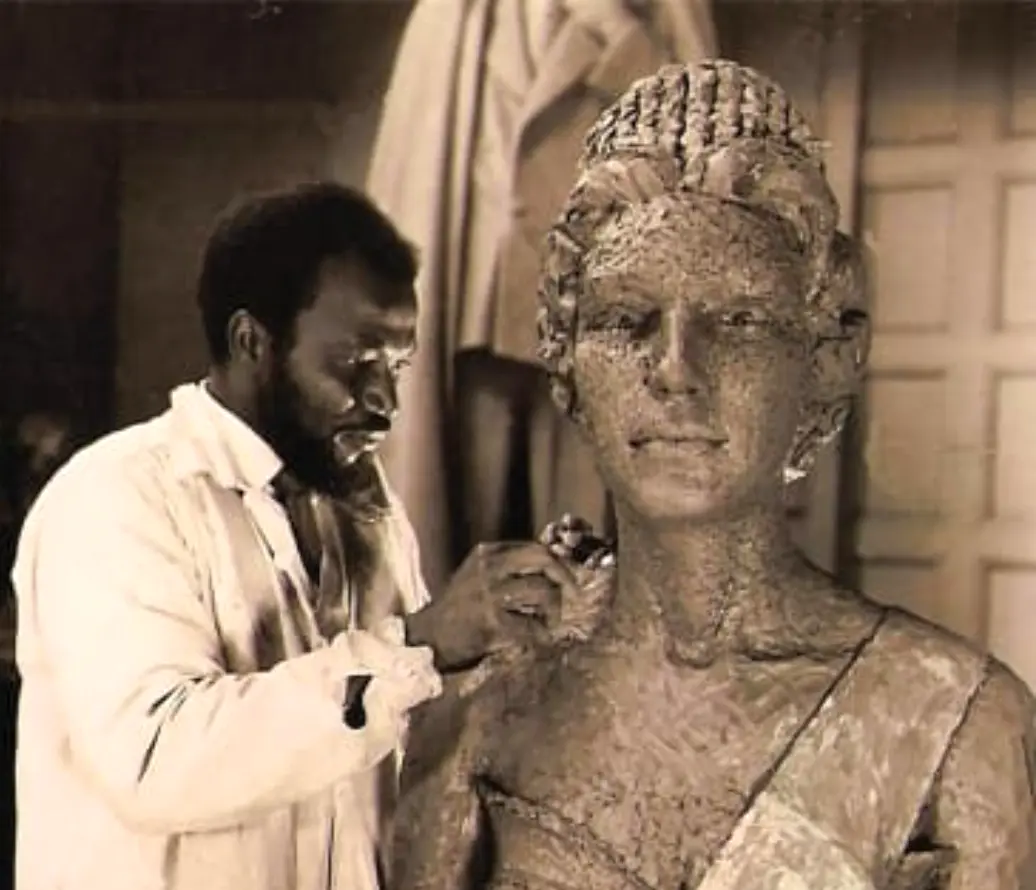As British sovereign Queen Elizabeth II of England and the Head of Commonwealth of nations passed away to eternal glory after 70 years of reign, her bronze statue by Africa’s foremost 20th Century Artist, late Prof. Ben Enwonwu resonates in farewell. She became the Queen of England in 1952 through ascription, a formal rule of succession which qualified her to rule until death. The Queen belonged to the elite class of the rich, privileged, globally famous and powerful. She occupied a prominent status in the social structure of Great Britain and the Commonwealth in which she played important roles in the life of nations and nationals, including Nigeria as a crown colony which became independent in 1960.
The introduction of Western education in Nigeria led to the arrival of an English art teacher, Kenneth Murray in 1927. Ben Enwonwu became one of his art students in Government Colleges at Umuahia and Ibadan in the 1930s. Upon completion of his secondary education, taught art in schools and had his first solo-exhibition in 1942 at the Exhibition Centre, Marina, Lagos. Through the exhibition Mr. Harford, Director of Shell-Mex of West Africa offered him a scholarship to study at the Slade School of Fine Art, London and graduated in 1947. He did a postgraduate course in anthropology and ethnography at U.C.L and L.S.C. He came back in 1948 and was appointed art supervisor and later rose to the position of an Art Adviser to the Nigerian government. Between 1948 to 1957, he had established a professional reputation unparalleled in modern Nigerian art and Africa as a whole. The professional feat was attained through numerous art exhibitions, public lectures and public commissions locally and internationally. Mr. Enwonwu was bestowed an M.B.E by the Queen in 1954 out of several other awards. He was commissioned by the Nigerian government to sculpt the Queen to commemorate her visit to Nigeria in 1956 as prelude to Nigeria’s independence.
Enwonwu’s statue of the Queen generated controversies as criticisms varied from political, sociological and anthropological. The mostly White critics argued that it was impossible for a Black Artist to do a portrait statue of the Queen without giving it an African interpretation. There were those who were shocked that Enwonwu had the audacity to sculpt the Queen. Many wondered how an African boy had been given such a privilege. Others were of the view that if he captured the likeness of the Queen, the representation must be from an African point of view. The art critic, Eric Newton, stated that “only when hand and chisel and imagination are in complete harmony the confidence seen in Enwonwu’s work occur”, an affirmation of the artistic merit of the statue from deep knowledge in humanity.
Enwonwu replied his critics, that the statue contains a certain innate African characteristics despite true representation of form was the touch of genius. He stated that the hallmark of achievement was in the representation of quality and its trueness to nature. This writer opines that it is very difficult to paint or sculpt portraits from a life model; most Artists would take the easier route of copying photographs. The professionalism in portraiture lies on working from a life model as was in the Renaissance tradition which provided a richer understanding of forms, interpretation of the sitter’s character and the validity of draughtsmanship.
Enwonwu observed that the Queen was a symbol of the British government and one of the highest any Artist can achieve. He stated that the Queen does not sit for any Artist unless such an Artist has the skill, you don’t just walk up to the Queen to request she sits for you. It is a diplomatic arrangement by governments and governments have Art Advisers to advise whether an Artist is good or not. For all that the Queen represented and her clout it was indeed an honour for Enwonwu to have her sit for him as a proof of professional competence and attainment. By the Queen’s statue Enwonwu scored highly in promoting the international relations between Nigeria and Britain, exemplified the strategic partnership in building people to people ties and as a tool that promoted parliamentary democracy as the statue was meant to be at the House of Representatives at the time.
The statue has some innate qualities of African embodied expression in terms of its composition, the still and upright frontal pose, the chiseled-like textured surfaces and the freedom of stylized treatment of drapery in a manner that suggested African wood carving techniques. Unlike the traditional African Artists who used 1/3 head to full-figure proportional guide, Enwonwu’s proportional approach was purely Western which relied on photographic representation of the Queen’s likeness. He created a hybrid-aesthetics which combined African and Western art conventions in a continuous parallel between antiquity and contemporaneity. This became the history and practice of contemporary arts and the lens for understanding the continent’s arts and societies.
Enwonwu’s strong international acclaim in art positioned contemporary African art at the world stage. As the first Black man, African Artist to sculpt the Queen, he broke racial barriers and questioned racial prejudices as one sufficiently gifted to sculpt the Queen in the same manner equal to the Greco-Roman classical art tradition. The Queen statue was depicted in the classical retinal beauty in contrast to stylistic stereotypes ascribed to African art as grotesque representation, and their artists incapable of the perceptual realism of Western art. For this reason, African art with misunderstood canons was described by Western art scholars as primitive artifacts, curio objects and not considered as art.
Enwonwu was bestowed with the highest academic award of Nigerian National Order of Merit Award (NNOM) in 1980, for outstanding contributions in art. As the arts community in Nigeria bid farewell to the Queen, we reflect on the state of Nigerian contemporary arts today. There is no befitting architectural edifice for Nigeria’s National Gallery of Art in the Federal Capital Territory, Abuja where people can go to see the historical development of Nigerian modern and contemporary arts, enjoy its tourism and leisure assets and educational value for mass literacy, the same way we view the National Gallery at Trafalgar Square, London as an important British tourism hub housing works of arts dating back to 12th century.
The proposal for establishing National Gallery of Art was written by art scholars. Its management is ideally an intellectual position but unfortunately it has been left in the hands of those without the requisite education in art and curation against the background of international best practices. This is uninspiring and leaves the (NGA) without a constructive contemporary arts future.
VANGUARD






